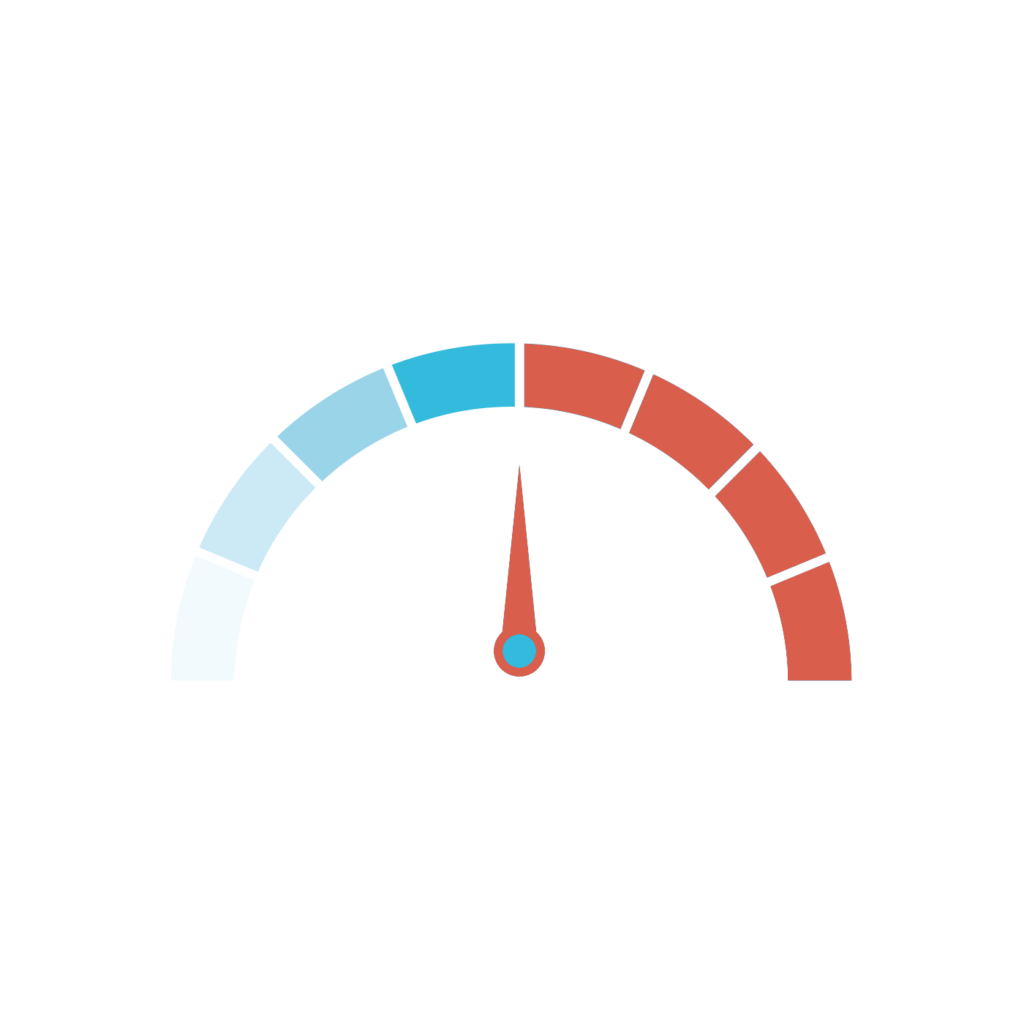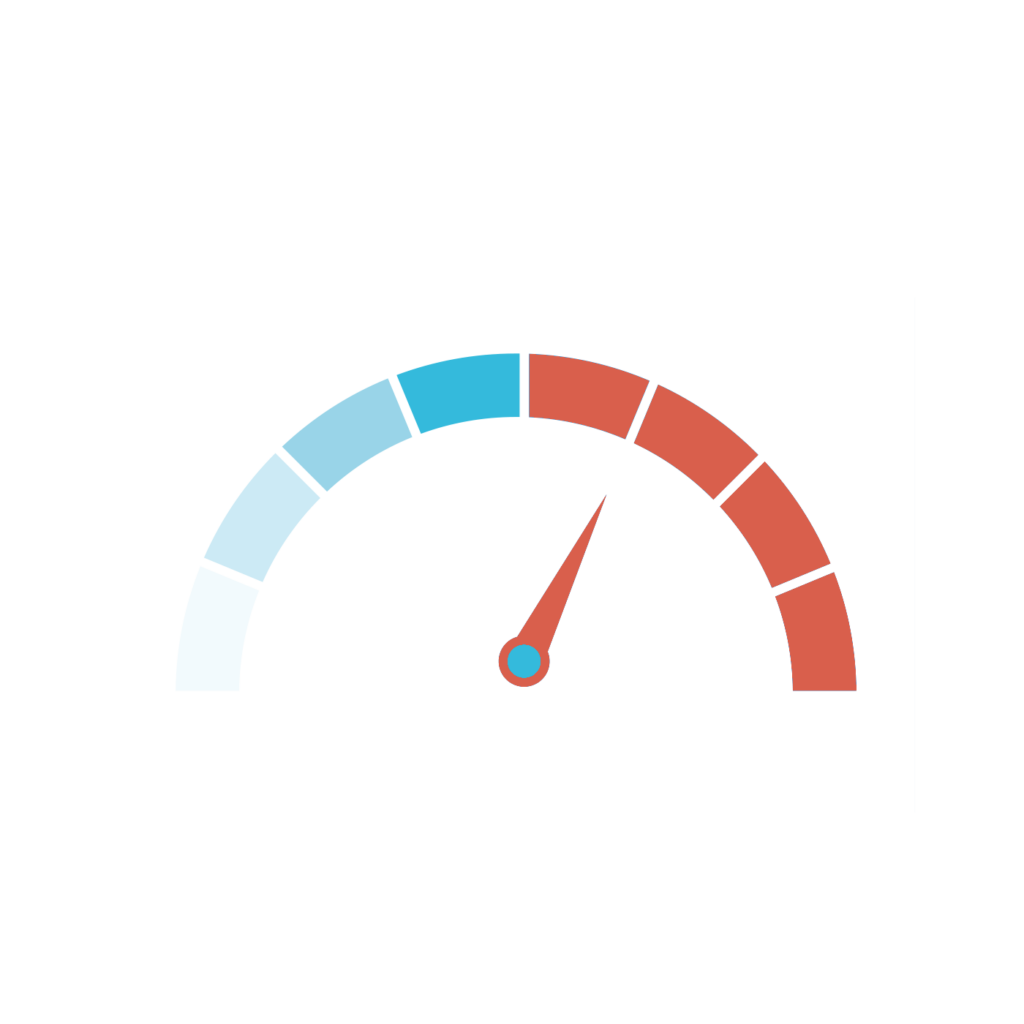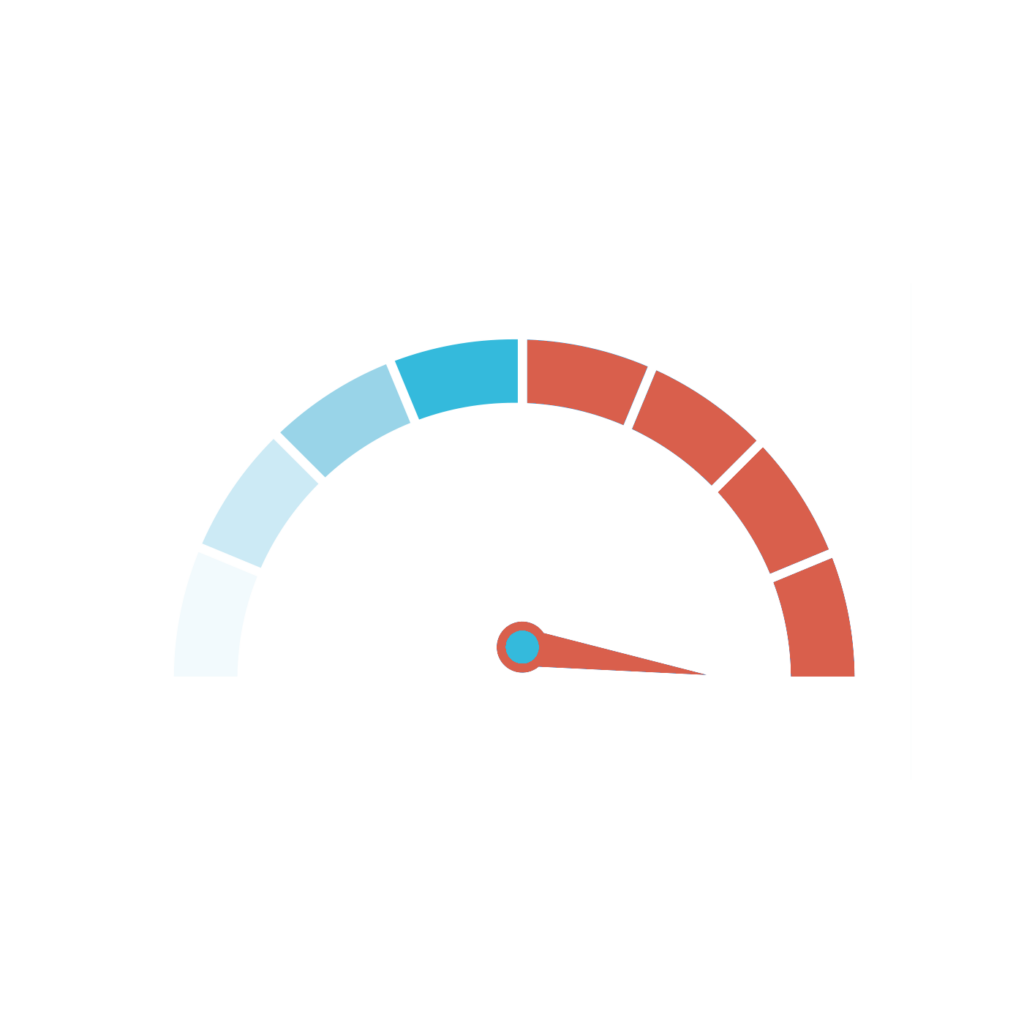Note: The table below ranks NBN Standard (50 Mbps) plans (the most popular NBN speed tier). For more speed options, choose a speed tier from the tool below the table.
Compare NBN plans and deals from 30+ top-ranked providers
Looking for a new NBN plan?
Choose the NBN speed you do want
How to compare NBN plans
Choosing an NBN plan has been made to seem a lot more complicated than it is. The decade-long network rollout, the changes of direction and the constant political sniping have made the NBN seem like it may have been more trouble than it’s worth.
But the fact is, you don’t need to worry about any of that. To get your family connected to a fast, reliable internet connection, there are just a few things you need to consider.
NBN speed
The speed options available to you are also determined by your technology type. Most connections are eligible for NBN Basic (12Mbps), Basic II (25 Mbps), Standard (50Mbps) and Fast (100Mbps) but only select FTTP and HFC (Hybrid-Fibre Coaxial) customers are eligible for Superfast (250 Mbps) and Ultrafast (1000 Mbps). Find out what NBN speed you need in our guide.
NBN plan price
Once you've determined which technology is available to you and your speed requirements, the next most important consideration is price. Unlike choosing a mobile plan, where network is a prime deciding factor, most NBN providers offer the same service, so there are fewer reasons to pay a premium.
NBN providers
Though price might be a big determining factor in your NBN choice, there are other reasons to compare, like customer satisfaction and bundling options. We rate providers on a five-star scale using over 25 points of comparison in four categories (speed, value, features and customer satisfaction). See our recommendations for the best NBN providers based on our criteria.
NBN technology type
Whether your address is FTTP (Fibre-to-the-Premises), FTTN (Fibre-to-the-Node) or FTTB (Fibre-to-the-Basement), is somewhat out of your control. FTTP is the superior technology but not the most common (and upgrade options can be expensive). You don't need to know what technology you have at your address. If you use our tool at the top of the page, it will only surface plans available to you.
Internet speed is the core concern when comparing NBN plans as it is the factor of a plan that determines the price you pay. It used to be that we would need to consider how much data we would need each month, but the vast majority of NBN plans include unlimited data nowadays, so speed is the thing to focus on.
Differences in NBN speed is measured in Mbps (Megabits per second) which, let's face it, is a pretty meaningless figure for most of us. Obviously, more megabits means faster speeds but it also means a higher monthly price.
Here’s a look at popular NBN speed tiers, and who they’re suitable for:
NBN 25
NBN 25 is suitable for 1-2 person households. If most of your NBN use is browsing the internet and streaming Netflix, NBN 25 should serve your needs just fine.
NBN 50
NBN 50 is the most popular NBN speed tier, and is suitable for 3-4 person households. With NBN 50, you should have no problem streaming video from several devices simultaneously. It’s also fine for most online gaming.
NBN 100
If you live in a sharehouse or have a large family, you may want to choose NBN 100. It means you’ll be able to stream from more devices without slowing down your connection. It also suits the needs of most small-to-medium businesses.
NBN 250-1000
If you’re downloading multiple large files per day, you might want to look at the higher NBN speed tiers. While most people won’t need the speed delivered by NBN 250 or above, it’s a good choice for businesses, or serious gamers who are regularly downloading large game files. You should note, though, that you won’t be able to access these higher speed tiers without a Fibre-to-the-Premises (FTTP) connection.
What are typical evening speeds?
When NBN providers discuss speeds, they advertise "typical evening speeds" rather than maximum potential NBN speeds (e.g. the tiers listed above).
Typical evening speeds are the busiest hours of network usage (7:00 PM to 11:00 PM) when most Australians are using their home internet connections. This evening time frame is used as a benchmark to compare NBN providers and speeds because it's the best representation of what users can expect and the time when network congestion is at its worst. So if you've got a good typical evening speed, you should expect the same, if not better, during the day.
Wondering what speed you get with your current internet provider? Use the speed test tool below while connected to your primary home WiFi connection to see your current download speeds.
With energy prices and the cost of living on the rise in Australia, we're all feeling the pinch. If you're simply looking for the very cheapest NBN plans on the market, regardless of speed, you'll find just that in the table below.
Our comparison engine features plans from over 30 NBN providers and the list below represents the very cheapest NBN Internet plans in our database.
There are a whole host of NBN providers out there, each with their own unique plans and perks. Finding the right provider for you comes down to weighing up factors such as price, reliability, perks and whether or not you’ll need to supply your own modem. Here’s a rundown of some of the most popular NBN providers in Australia.
Telstra internet certainly isn’t the cheapest NBN option, but it offers a great mix of speed, perks and reliability. Telstra consistently boasts some of the fastest typical evening speeds of any NBN provider. All Telstra’s plans are contract-free, and they provide a smart modem with 4G backup. You can also choose to bundle Foxtel with your Telstra NBN.
Optus also offers a bundled modem with 4G backup. In addition to good speeds, Optus also offers some great perks with discounted pricing for Optus Sport. This gets you access to sporting events you can’t find streaming anywhere else, such as the English Premier League.
Dodo provides unlimited, no-contract data plans for NBN 25 to NBN 100. They can supply modems, but there's an additional cost involved. Support is available via phone, email, 24/7 live chat, and social channels. If you bundle internet and energy plans, you can save between $5 to $10 per month, depending on your location.
Vodafone offers unlimited data plans ranging from NBN 25 to NBN 1000. They provide a free modem compatible with 4G backup on all plans. Support is available through in-store visits, phone calls, 24/7 live chat, and social channels. Additionally, bundling internet and mobile plans can lead to savings on your monthly bill.
TPG offers competitive pricing, and reliable typical evening speeds. You also have the option to save money by bundling your internet with a SIM-only mobile plan.
Aussie Broadband has quickly become a popular NBN provider with their high typical evening speeds and great support.
Tangerine consistently ranks among our top NBN providers due to the great deals and discounts they offer. Their special offers typically last between 6 and 12 months, but Tangerine is still competitively priced even without an ongoing discount.
Exetel is one of the best performers in the ACCC’s quarterly NBN speed assessments. While it’s full-priced plans might not seem that enticing, Exetel offers promotional pricing for the first 6 months that makes its plans some of the most competitive in the market. And, with no contract, you’re not locked in once the promotional pricing period ends.
Popular NBN providers
Here's a look at the top NBN providers in our database, sorted by popularity.
How we compare NBN plans and providers
Finding the best NBN plan and provider can be tough. We try to take the guesswork out by comparing plans and providers on several metrics:
- Price: Most of us are budget conscious, and want to get value for money. We use our daily updating database to compare prices across a range of NBN providers and plans.
- Speed: We use both self-reported typical evening speeds from providers and the quarterly ACCC speed report to compare NBN providers on the speeds you can reasonably expect from their plans.
- Support: If something goes wrong with your internet connection, you want an easy way to get it resolved. We compare NBN providers on the number of available customer support channels.
- Inclusions: Sometimes, you're just looking for a bare-bones internet plan that gets you connected. Other times, you might be looking for perks or special features. We compare NBN providers on any inclusions or plan features.
Perhaps the most confusing part of the NBN is the implementation of the mixed technology rollout. What this meant was that the government instructed NBNco to determine the best, most cost-effective technology to connect each house or business.
All up there are seven different connection types in the mixed-technology NBN:
- FTTP: Fibre-to-the-Premises
- HFC: Hybrid-Fibre Coaxial
- FTTN: Fibre-to-the-Node
- FTTC: Fibre-to-the-Curb
- FTTB: Fibre to the-Basement/Building
- Fixed Wireless NBN
- Satellite NBN (aka Sky Muster)
You’ll notice that most of these begin with ‘Fibre to the…’ and this is a hint for how the connection types differ from one another. Fibre optic cable features at some point in your connection to the NBN, and the closer your house is to the fibre optic cable, the faster and more reliable your connection.
How does FTTN work?
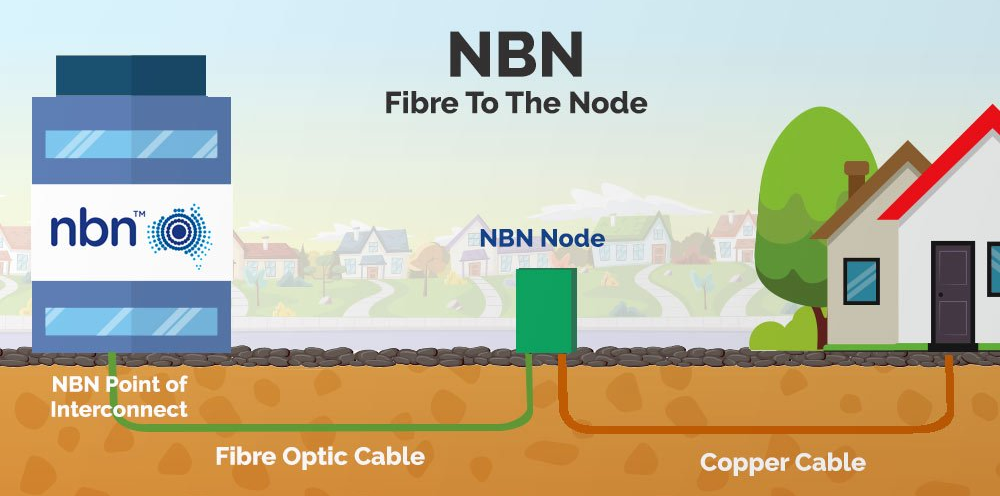
How does FTTP work?
FTTN (Fibre-to-the-Node) is the most prevalent of the technology options in use, and it is also the cheapest to rollout and worst-performing. Like FTTC (Fibre-to-the Curb), your house connects to a shared distribution box, called a node, located not outside your house, but instead somewhere in your neighbourhood. Rather than using 10m of old telephone line in the connection, a FTTN connection may have up to 1km of copper. The further your house is from the Node, the slower your connection may be. Around 40% of all NBN connections use FTTN.
That said, if you find your NBN connection is unusably slow, you might want to consider an alternative such as 4G Home Wireless broadband (or even 5G if you can get it).
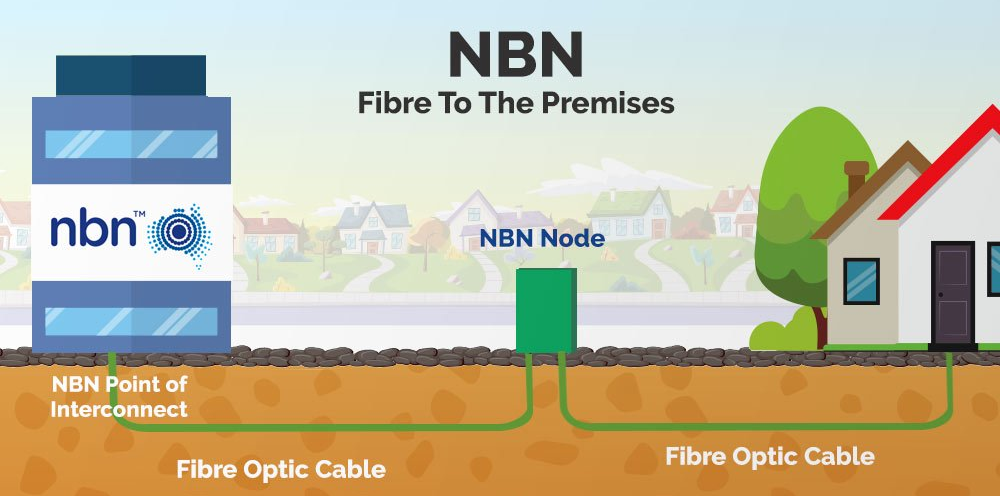
FTTP (Fibre-to-the-Premises) means that this fibre optic cable runs right up to your house, as is considered the gold standard for fixed-line internet connections. But it is also the most expensive per connection so it's only used in about 20% of homes.
FTTC (Fibre-to-the-Curb) means that the fibre cable is connected to a distribution box somewhere on the street outside your house. Your house connects to this box using the old copper telephone lines, but because it is mostly fibre, the connection is also fast.
If you live in an area beyond where NBNco will run physical cables, then you will rely on wireless technology instead. In many regional areas, you will have a Fixed Wireless NBN connection, which works like a mobile network connection. People living in more remote areas will connect via the Sky Muster satellite system.
We’re explaining this here for your information only as there is nothing you can do about the technology type in your area. When you are choosing an NBN plan this is not a consideration at all but it might limit the type of plans you have access to.
How to switch NBN plans and providers
The last thing to keep in mind when choosing an NBN plan is that switching from one provider to another is usually a simple, painless process. In the past, changing internet plans could take 10 business days and involve several hours of downtime as a technician manually switched you over.
It used to be a battle of Telstra vs. Optus for your internet needs, but these days, most NBN connections can be switched remotely and it can be a same-day process. For example, a person in our team signed up for a new NBN plan during his lunch break one day and was moved to the new provider's network before he got home that evening.
This is important to know because the majority of NBN plans have no long-term contract commitments. Most plans are month-to-month. To take advantage of this, you need to be ready to switch at any time. If you are not happy with the service: switch. If you regularly compare plans and spot a better deal: switch. If you sign up for a short-term promotion and it expires: switch.
NBN plans are changing all the time, and in both directions, so you shouldn’t feel like you are stuck paying for something you no longer want. Jump online, find a better deal, and move on. If you still think you are having the best deal, keep you NBN provider, even if you move out.
Frequently asked questions
Do I need may own modem or router for an NBN plan?
This depends on which provider you choose. Some providers include a modem or router with their NBN plans, while others are BYO modem or router. Check out our guide for a look at which NBN providers supply modems.
Do I have to pay for installation to switch providers?
No, you don't have to pay to switch providers. If you have your own modem, switching providers is usually a seamless process.
If your new provider supplies you with a new modem, you won't have to pay upfront. Just be aware that if you cancel your plan, you'll likely either have to return your modem or pay a fee.
How much data do I need on an NBN plan?
The good news is, most NBN plans these days offer unlimited data. We highly recommend sticking to unlimited data plans, as they offer the best value, and you won't have to keep track of your data usage.
How can I speed up my NBN?
If you find you're not getting your plan's advertised speeds, the solution could be as simple as relocating your modem. Check out our guide on how to speed up slow NBN.
Is 5G better than the NBN?
If you're in an area with good 5G connection, our personal experience has shown that 5G home internet beats the NBN. Our one-year testing found that 5G home internet consistently delivered faster speeds at lower prices. Of course, this will all depend on 5G coverage in your area.
Related Articles




